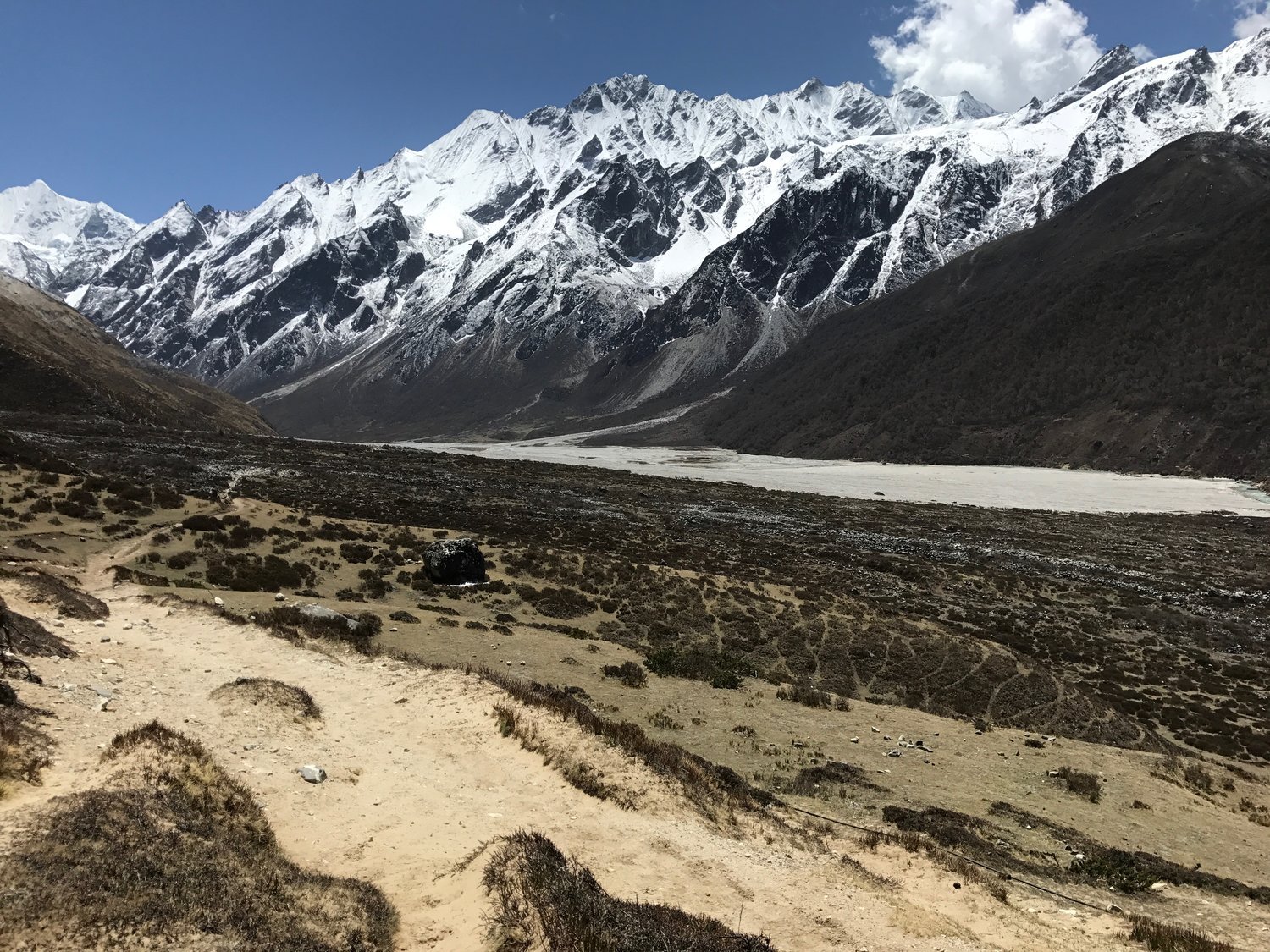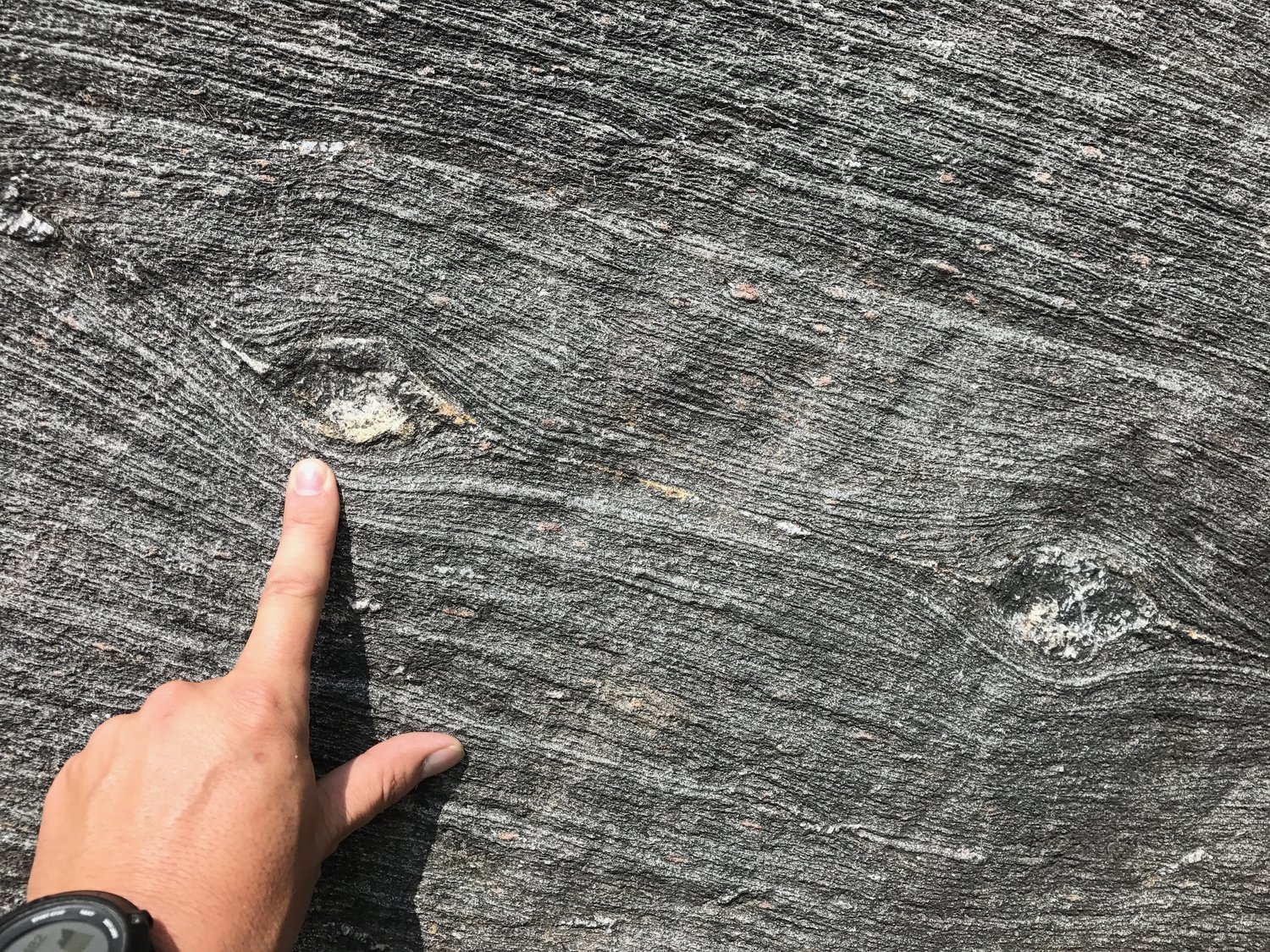Our groups orogenic research is focused on answering enigmatic and persistent questions about how orogens grow and decay. This includes studies of (a) the “channel and escape flow” hypotheses, wherein long wavelength flow of weak viscous mid- to lower-crust drives redistribution of mass and heat in collisional orogenic systems, (b) the interactions between orogenic thermal and rheological evolution, and how that controls strain localization, development of major fault/shear zones, and the ultimate structural architecture of the orogen, (c) the presence(?) of climate and tectonic linkages in orogens, and (d) and the processes that control rates of orogenic collapse and decay, which vary significantly from orogen to orogen. To do this, my group couples REE petrochronology, multi-system thermochronology, structural analyses, metamorphic petrology, and modeling from lithosphere to the atmosphere in mountain ranges worldwide, including the southern Appalachians, the Himalayas, and the Scottish Caledonides, with a new project starting in 2024 in the Pakistan Karakoram around K2.
CRUSTAL CHANNEL AND ‘ESCAPE’ FLOW IN HOT OROGENS
In modern day tectonics research, one of the most intriguing and impactful notions to emerge is the idea that long wavelength flow (100’s of kilometers) of weak viscous mid- to lower-crustal rocks can substantially influence shortening accommodation and the redistribution of mass and heat in collisional systems. These models, which are mostly predicated on a number of whole orogen numerical simulations from the Dalhousie University Geodynamics Group, quite elegantly explain a number of seemingly unrelated features in the Himalayan-Tibetan (HT) system. These persistent consistencies between model predictions and field observations not only changed the way many interpreted the evolution of the HT system, but it was also conceptually proposed to explain observations in a number of other collisional worldwide. Despite the strong correlations between model predictions and field and analytical observations, the condition(s) that may have led to deactivation and/or redirection of the channel at the southern front of the Tibetan plateau remains as a persistent enigma. One very intriguing possibility is that the mid- to lower-crustal mass and heat efflux was redirected to the east in a style of ‘escape’ flow as the frontal Himalaya transitioned to critical wedge-style slip along the Main Boundary and Main Frontal thrusts, implying an interesting spatial and temporal partitioning of deformation in these systems.
Because ‘escape’ flow may play a prominent geodynamic role in collisional shortening accommodation, we need to understand: (a) what mechanisms might drive crustal channel flow to be deflected from orogen-normal to orogen-parallel, (b) are the rheological boundaries controlling the geometry of ‘escape’ flow merely a function of pre-existing lithological differences or do they result from transient thermal effects such as heat advection, and (c) do the thermal and rheological conditions recorded in both the presumed ‘escape’ flow channel and in the bounding channel buttress and/or crustal lid match those conditions necessary for flow to occur in numerical simulations (i.e. percent melt present, viscosity, channel thickness, P-T-t particle trajectories)? In this study, we are using the southern Appalachian Inner Piedmont and the modern Himalayan system as natural laboratories to address these questions.
The upper cross-section shows a schematic model of crustal channel flow, wherein melt-weakened crust flows from beneath the Tibetan plateau to be exhumed at the topographic break at the front of the Himalayan collisional system. Approximate position of the cross-section is shown on the map to the left. The lower cross-section shows the results of Reference Model 1 of Beaumont et al. (2004), which predicts the flow of crustal material from beneath the Tibetan plateau due to long wavelength lithostatic stress gradients driving orogen-normal flow of melt-weakened mid-crustal material. Black arrows indicate flow vectors in this modeled system.
Mountains of Langtang National Park as seen from the village of Kyangin Gompa, Nepal (2017 Field Season)
Sheared feldspar megacrysts in the Duerali normal-sense shear zone (top-down-to-the-north, to the right in the photo), South Tibetan Detachment system, Annapurna region, Nepal (2017 Field Season)
THERMAL-KINEMATIC LINKAGES IN OROGENS
At the scale of an orogenic wedge, mechanical and thermal strain continuum models indicate that bulk thermal architecture is governed by the inherent kinematic asymmetry of the pro- and retro-sides of the wedge. In natural systems, these zones are arguably more complex, as major orogenic components such as the high-grade hinterland, low-grade hinterland, and exterior foreland fold-thrust belt are generally separated by discrete faults and/or shear zones. These boundaries commonly accommodate substantial thrust and in some cases normal sense displacement of 10's to 100's kms. Displacement of this magnitude can lead to juxtaposition of rocks that do not share a common protolith and, perhaps most importantly, finite deformational and thermal history. Observation of the latter indicates that these structures exert a critical influence on the thermal evolution (and by association controls deformational style through temperature-dependent rheology) of collisional systems and highlights our need to understand this thermal-kinematic linkage. Our group uses the Scottish Caledonides and the Himalayan-Tibetan system as natural laboratories to investigate how crustal-scale thrust faults influence the thermal architecture of orogenic systems and how that thermal architecture controls the rheological response of the wedge. To do this, we integrate detailed field work, quantitative pressure-temperature and geochronologic analyses, and finite-element modeling.
Collaborators: Kyle Ashley (University of Pittsburgh), Richard Law (Virginia Tech), Geoff Lloyd (University of Leeds, UK), Rob Strachan (University of Portsmouth, UK), Calvin Mako (Virginia Tech), and Summer Brown (University of Kentucky).
Conceptual thermal-mechanical model of a collisional orogen that highlights the interplay between wedge thickening, major thrust faults, and the evolution of transient isotherm geometries in the crust and lithosphere. Framework model and isotherm geometries inspired by previous orogenic modeling studies (Willett et al. 1993; Jamieson et al. 1998).
Schematic set-up, parameters, and model results for a new phase of finite element models that integrate thrusting, erosion, heat production, and heat transfer across fault boundaries to investigate how crustal-scale thrust faults in orogens may impact metamorphic heating rates and the development of inverted thermal-metamorphic sequences (from Thigpen et al. in review).
PUBLICATIONS
*Group members shown in bold
Thigpen, J.R., Ashley, K.T. and Law, R.D. 2017. Evaluating kinematic displacement rate effects on transient thermal processes in thrust belts using coupled thermomechanical finite-element models, in Law, R.D., Thigpen, J.R., Merschat, A.J. and Stowell, H. (eds) Linkages and Feedbacks In Orogenic Systems: Geological Society of America Memoir, v. 213, p. 1-23. https://doi.org/10.1130/2017.1213(01).
Ashley, K.T., Law, R.D. and Thigpen, J.R. 2017. Garnet morphology distribution in the northern part of the Moine Supergroup, Scottish Caledonides: Journal of Metamorphic Geology, v. 35, p. 77-94. https://doi.org/10.1111/jmg.12221.
Ashley, K.T., Thigpen, J.R. and Law, R.D. 2015. Prograde evolution of the Scottish Caledonides and tectonic implications: Lithos, v. 224-225, p. 160-178. https://doi.org/10.1016/j.lithos.2015.03.011.
Thigpen, J.R., Law, R.D., Loehn, C.L., Strachan, R., Tracy, R.J., Lloyd, G.E., Roth, B.L. and Brown, S.J. 2013. Thermal structure and tectonic evolution of the Scandian orogenic wedge, Scottish Caledonides: Integrating geothermometry, deformation temperatures, and conceptual thermal-kinematic models: Journal of Metamorphic Geology, v. 31, p. 813-842. https://doi.org/10.1111/jmg.12046.
Thigpen, J.R., Law, R.D., Lloyd, G.E., Brown, S.J. and Cook, B. 2010. Deformation temperatures, vorticity of flow, and strain symmetry in the Loch Eriboll region, NW Scotland: Implications for the kinematic and structural evolution of the northernmost Moine thrust zone, in Law, R.D., Butler, R.W.H., Holdsworth, R., Krabbendam, M. and Strachan, R. (eds) Continental Tectonics and Mountain Building - The Legacy of Peach and Horne: Geological Society Special Publications, v. 335, p. 623-662, London. https://doi.org/10.1144/SP335.26.
Thigpen, J.R., Law, R.D., Lloyd, G.E. and Brown, S.J. 2010. Deformation temperatures, vorticity of flow, and strain in the Moine thrust zone: Reassessing the tectonic evolution of the Scandian foreland-hinterland transition zone: Journal of Structural Geology, v. 32, p. 920-940. https://doi.org/10.1016/j.jsg.2010.05.001.





